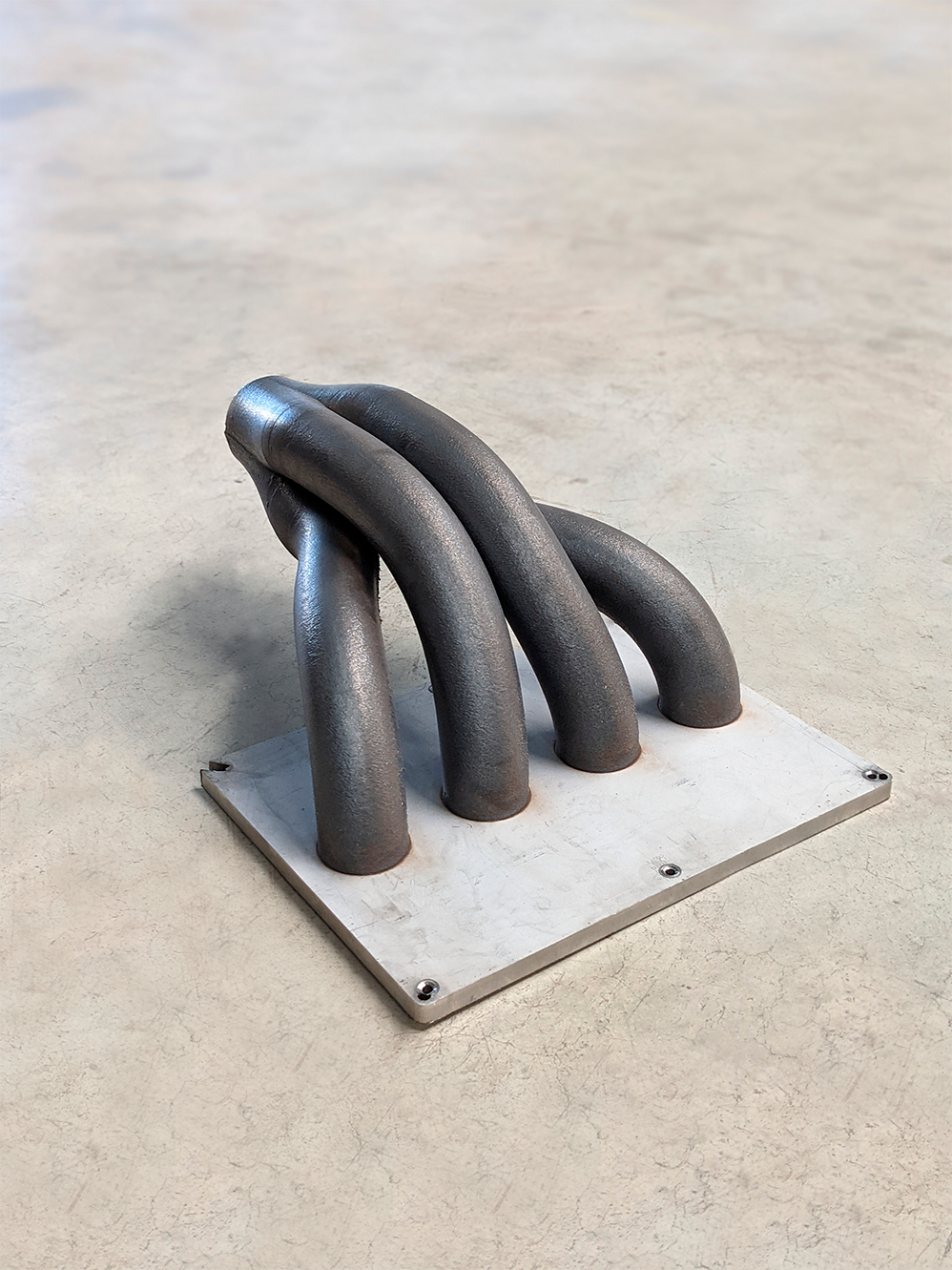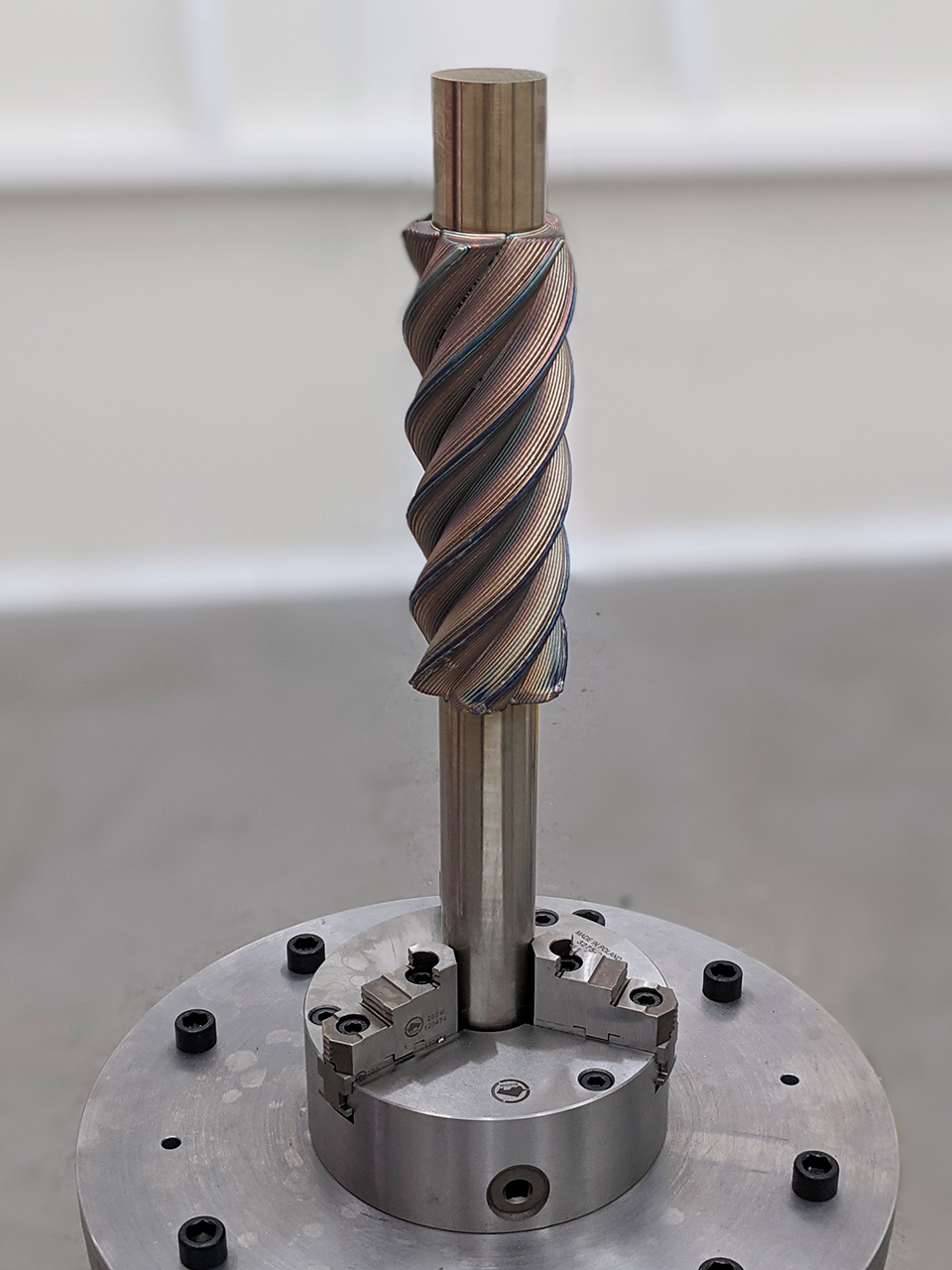In the two and a half years since its founding in May 2019, 3D printer OEM Meltio has grown rapidly. In addition to installing approximately 110 machines at customer facilities worldwide, the firm has established a new factory in the south of Spain, a brand new facility in Florida, and has risen to 70 employees.
The company’s leading product portfolio includes its Meltio M450 small-footprint industrial metal 3D printer and its Meltio Engine, designed to integrate seamlessly with CNC machines, robotic arms, and gantry systems to deliver affordable and accessible hybrid manufacturing capabilities to its customers.
I sat down with Meltio’s CTO Brian Matthews and Robot AM Developer Alejandro Nieto to find out more about the Meltio Engine Robot Integration and its key advantages.
“We think we will sell over 200 machines next year, and that will really put us on the map in a very significant way,” says Matthews. “If you look at the metal market, very few companies sell more than 20-30 machines per year, and there are only a few companies that sell more than 100 machines.
“Our aim is to sell around one thousand units per year in the coming years. So I think already we are a very significant player, even right at the beginning of this project.”
Meltio’s multi-metal technology
Wire Laser Metal Deposition (LMD) is Meltio’s take on the Directed Energy Deposition (DED) process. The LMD toolhead of the system utilizes multiple high-power lasers to melt metal feedstock directly onto a substrate below, resulting in fully dense metal parts. The firm has recently been issued its second patent by the United States Patent and Trademark Office (USPTO), which Matthews says proves the technology’s novelty.
“Using multiple lasers allows us to have scalable laser power in a tightly integrated system,” he explains. “So it’s very compact, easy to integrate with CNC machines and robots, and allows us to have the material feed on-axis coaxially and what that means is that every direction looks the same to the process. The lasers are inclined from vertical which allows the material to enter vertically oriented, which is really critical as most other companies in the market with laser wire systems tend to place their wire feeders off-axis like a side-feed mechanism, which gives you a lot of limitations.”
Meltio’s first customers were universities with a desire to carry out material research, which, with the ability to print with both wire and powder, opened up numerous possibilities in this field. Since then, the company has moved into production, which is “where the volume really is” according to Matthews. In fact, he says 99 percent of Meltio’s R&D efforts are in wire.

“Wire is pretty much the lowest commodity material you can acquire,” he says. “If you look at PBF systems, because the quality requirements for powder are so high you have to have a very small particle size and the particles have to be spherical. This means a lot of powder is rejected because it is not spherical, and so that drives up cost, for instance where a $3 or $4 per kilogram commodity cost ends up becoming $50 to $100 per kilogram, whereas with wire there is only a slight increase in cost, say to $5 or $6 per kilogram.”
Another significant benefit of using wire as feedstock is the material utilization rate, he continues, which is “effectively 100 percent”. When taking into account both the cost difference and material utilization advantages of wire, Matthews says you can end up with a factor of 50 difference in the cost, which is driving more and more customers to wire.
Powder does yield some advantages though, such as material selection and fine functional gradients, which is why Meltio offers both material capabilities.
The Meltio Engine Robot Integration
With a frame limited only by the motion system, the Meltio Engine allows for easy integration on any shop floor and is powered by Meltio’s LMD technology. Users opting for raw wire materials benefit from cleanliness as there is no need for specialized apparatus.
The Meltio Engine Robot Integration turns a robot arm into a metal 3D printing system with no inherent size constraints, as the working envelope is only limited by the size of the motion system. The Robot Integration is ideal for large and complex 3D printing, repair, cladding, and feature additions, and is able to integrate with any robot arm manufacturer and interface on the market.
The system creates complex parts with infinite degrees of freedom and operates on an open materials platform, which includes stainless steel, mild steel, carbon steel, titanium, and Inconel.
“We have an open platform that means that the movement system, in this case a robot, is something the customer can choose,” says Nieto. “This means they have more geometrical freedom and a much bigger working volume compared to a CNC system. Customers can add value to their businesses by bringing more applications.”
The Robot Integration system provides a similar user experience to FDM, but for metal printing, with materials that are easy to parameterize using sensors that provide feedback to the user. Some of the other key advantages of using a two-external-axis positioner are the ability to print vertically to deliver optimal surface quality to parts and enabling multiple solutions for the same part.
The system prides itself on reliability, allowing for batch production and the fabrication of multiple prints of the same quality. The Robot Integration also has several upgrades, including a programmable power supply that preheats the material to increase the deposition rate and a dual wire option that enables the 3D printing of two-wire materials simultaneously with rapid wire switches.
Opening up new applications
With its Meltio Engine Robot Integration, the company has been able to achieve various novel applications that exhibit enhanced mechanical properties or that can be fabricated more efficiently in terms of time, cost, and material usage.
For instance, the company was able to 3D print a blisk, generally seen in the turbine industry, as a demonstrator application that is typically very expensive to manufacture via conventional means. In fact, Nieto explains that the company was able to produce the blades for far less than what the conventional cost would have been to mill the blisk from a metal block.
“We really wanted to show that this is possible and cheap to manufacture with our technology,” he says. “This is interesting to manufacture because hollow lightweight parts can be created compared to milling.”
And Meltio’s wire-laser DED technology has been leveraged for a whole host of other sectors, too.
“We’re finding that a whole range of industries are coming to us,” adds Matthews. “We’ve done demo parts for medical, aerospace, energy, automotive, electronics, and the energy industries, including nuclear. We work with them to create demo paths for applications, but on top of that we stimulate interest by creating our application catalogs to show what the possibilities are.”
The firm has also achieved variable diameter and layer height within a 3D printed manifold using its LMD technology, and accomplished an optimized hollow structure and speed of production for a three-blade propeller.
“Another example is a rotary screw compressor for a supercharger, which we think could be a really interesting application if made hollow,” says Nieto. “We wanted to show the reliability of our technology so we did an overhang test in two ways. One was orienting the tool until it reached 90 degrees, and orienting the position of the tool head so it was always vertical, we achieved similar results in both ways.”

Meltio’s growth plan
Going forwards, Meltio is looking to continue its rapid growth trajectory by doubling its employee count over the next year as it enters into new markets such as China and India.
“We plan to open showrooms in India and China as a minimum in 2022,” says Matthews. “There are some other markets that as well we will probably open four or five showrooms around the world next year. And, of course, we will build a channel in those territories as well.”
Matthews says the projected additional personnel is a calculated move that will enable the firm to continue to strengthen its R&D capabilities and increase the number of machines it sells, both of which will require the company’s production capabilities to grow.
“It’s quite an investment we’re making in the next year, but that investment is driven by something we’re really proud about, that as a company we are completely organic,” he continues. “Demand determines how the company grows, and we’re growing the company because there is the demand to sell that many machines.”
Subscribe to the 3D Printing Industry newsletter for the latest news in additive manufacturing. You can also stay connected by following us on Twitter and liking us on Facebook.
Looking for a career in additive manufacturing? Visit 3D Printing Jobs for a selection of roles in the industry.
Subscribe to our YouTube channel for the latest 3D printing video shorts, reviews and webinar replays.
Featured image shows the Meltio Engine Robot Integration with helicoil. Photo via Meltio.



